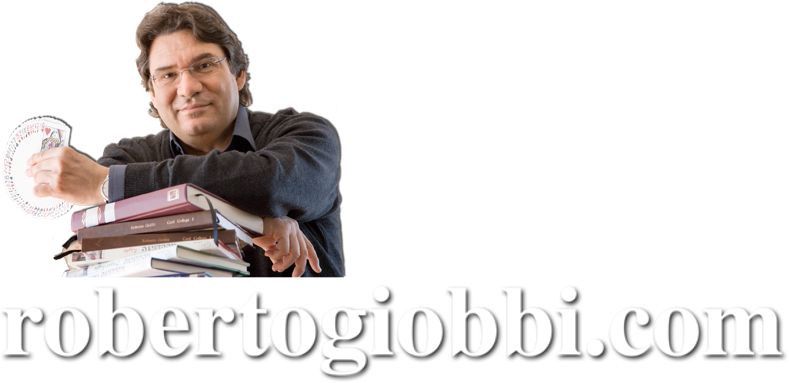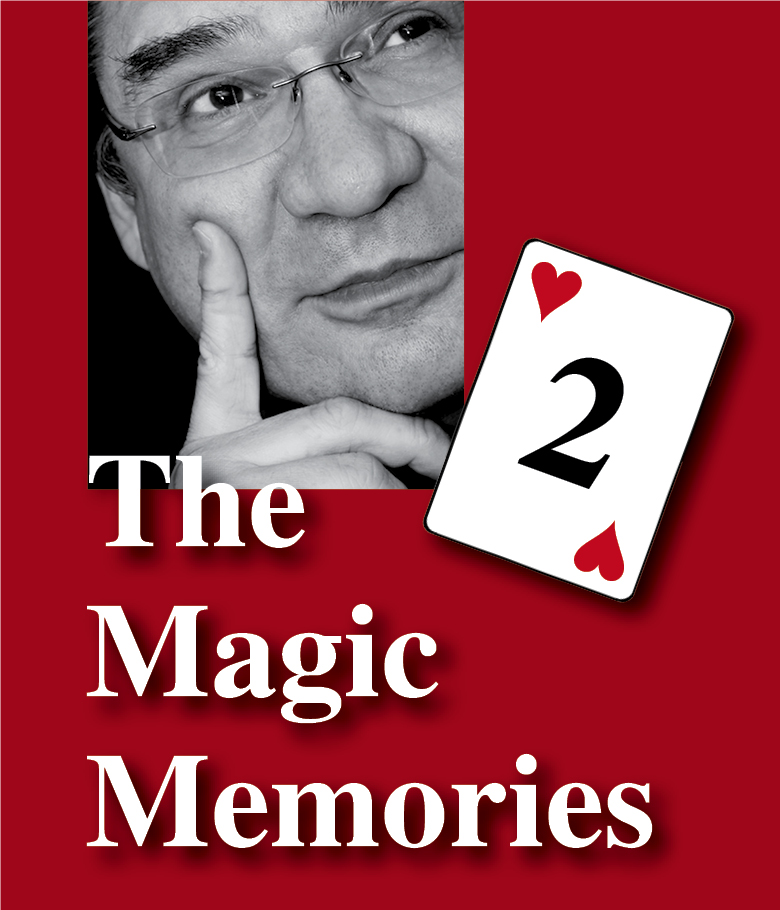
Hi everyone!
Congratulation to you (and me): We made it to the 26th installment of The Magic Memories, gone online SUN, 27th June 2021, at 0:07h, this being mid-point of the second Pandemic Year.
Therefore, today’s leitmotiv is the number 26, naturalmente. I’ll do a bit of “free association” hoping that you’ll find one or two things that catch your fancy.
Half Forcing Deck
The first thing that comes to my mind when I think of the number 26 is the “Half Forcing Deck” (HFD), i.e., one that consists of 26 cards all the same, and 26 indifferent cards. What sounds like a trivial thing is in reality quite complex. The basic application uses just the duplicates and the indifferent cards, usually separated in two banks, but also in groups or alternating. The next degree of sophistication is to shorten either one, in order to obtain one of two types of Svengali Deck. Although this is the deck par excellence to pitch to laymen on the street, in markets and magic shops, to the expert it is a powerful tool with which you can even fool people in the know. Just think “Partial Deck Switch” and “Faro Shuffle”… If you want to get an overview of what can be done with a Svengali Deck on a more sophisticated level, check out “Chapter 13 – Magic With a Svengali Pack of Cards” in Hugard’s (ed.) Encyclopedia of Card Tricks, and you’ll be spoilt for choice. This book, btw, is the book for the proverbial island: Descriptions reduced to the essential that require a lot of creative interpretation on the part of the student, i.e., the perfect starting point to practice “second degree originality”.
Yet another apparently simplistic application of the HFD is to treat the face of the duplicates and the back of the x-cards with roughing fluid to form 26 “Forcing Pairs”. You’ll find a most wonderful application of this rigged deck in Sharing Secrets, “The Trick That Can Be Explained”, p. 109, with which I’ve amazed some of the smartest minds in the business for years, including super-experts like Juan Tamariz and Bernard Bilis. If you have my book The Art of Switching Decks – A Guide for the Beginner and the Expert, watch the DVD (included at the back of the book!) again, just the first three tricks of the initial performance segment, and you’ll see me do that trick there. If you missed it, I promise that this will make your week 🙂
Years ago, I gave a lengthy lecture for my club here in Basel, the Zauberring Basel. For the record: The latter was originally founded under the name of “Hofzinser-Ring” in the year 1947, was later renamed “ZRB – Zauberring Basel” and joined as a local club the national organization Magischer Ring der Schweiz. In that lecture, however, I did not focus on what you can do with that Forcing Deck, but rather what you can do with the 26 indifferent cards! I can’t remember if people enjoyed it or threw eggs and tomatoes, but I still think that the subject is interesting, for various reasons you may now try to find for yourselves… I recommend you do this as a creative exercise: Make a list of ten tricks that can be done with this deck using the indifferent cards rather than the force cards. This is, of course, also very useful if you’re using a Half-Mnemonica (half of any memorized deck), to delay the use of the memorized part.
Sunken Key Card
If you are a card person, the number 26 should inevitably conjure up what might arguably be the most clever and deceptive use of the key card principle, the “Sunken Key Card”, sometimes called the “Distant Key Card Principle”, of which the “26th Card Location” is arguably the best-known example (but there are a lot more…). I first read about it in one of my favorite card books, Hugard’s & Braue’s Expert Card Technique, which I first read at age 16, and studied assiduously instead of chasing girls, which I should have done… but then maybe my Card College books would not be what they are. The lesson is: There is always a price to pay, and, as they say, nothing is for free, even death costs your life.
Anyway, the principle underlying the “26th Card Location” is put to effective use in “Routine 4” in Card College Light, pp. 63: I strongly advise you to re-study the complete three-part-routine, as not only is each trick a good one, but the synergistic idea connecting the three is a concept to note and retain. As I discuss in Sharing Secrets, recognizing and naming a concept is one of the most difficult, but also most useful things to do when you read or watch magic instruction. However, it is not enough to just do this, you must then also find one or two tricks in your repertoire to which you can apply the concept, in order to instill the concept and to make it part of your toolbox of skills, because that’s the point of real progress and the way to artistic maturity. And yes, it is a lot of work you can’t buy from magic store, BUT the results will be all you can hope for and contribute to your personal happiness – no esoteric beliefs and rituals here, just solid work. Isn’t it wonderful that you can reach happiness just by dealing with a key card concept 🙂
Incomplete Faro Control
The first to put the “Incomplete Faro” to good use was LePaul in his fantastic “Gymnastic Aces” from The Card Magic of Paul LePaul (p. 207), even after more than 70 years one of the best Ace-Openers. Marlo later concocted his control, where a card peeked at in the extended part of the telescoped deck, eventually ends up exactly in the center of an odd-numbered deck (26 – 1- 26). I discuss the principle in Card College Volume 3, in Richard Vollmer’s “The Two Detectives” (p. 697). Over the years Richard has come up with a few simplifications, which I have included in the revised edition of Grosse Kartenschule, so those who have the latest German edition of it can find it on p. 831. For the others who have the English edition, here is a very brief description: Instead of doing a Straddle Faro with the complete deck as described, hold the deck face down in elevated dealing position, cut off a little less than the top half of the deck, and then faro it into the larger lower part. Immediately extract the inserted part, discarding the few cards left on top and bottom of the deck. You end up holding a telescoped (incomplete) deck in perfect condition to execute the Incomplete Faro Control as explained in the trick. The advantage is that you don’t have to worry about your first Faro as much as before, and get into the trick smoothly.
Additional Suggestion
Try entering any of the above-mentioned terms into Denis Behr’s Conjuring Archive (such as “Sunken Key Card”, “26th Card Location” etc.), and you’ll be able to spend the rest of the week (at least!) exploring unknown galaxies of the Card Universe.
Final Comment
The Card College Playing Cards regular edition have been out of stock with many dealers, but Murphy’s just restocked, so you should be able to get them again. I predict that the first edition of 2019 (so marked on both sides of the card case) will soon be completely unavailable and become a sought-after deck. If you want to say “Thank you” and support yours truly (me!), order them directly from my webshop HERE (especially the brick with 12 decks is at a really good price). And if you do so, you’ll always get a personally signed greeting card and some “extras”.

Have a great week!
Yours sincerely,
Roberto Giobbi

